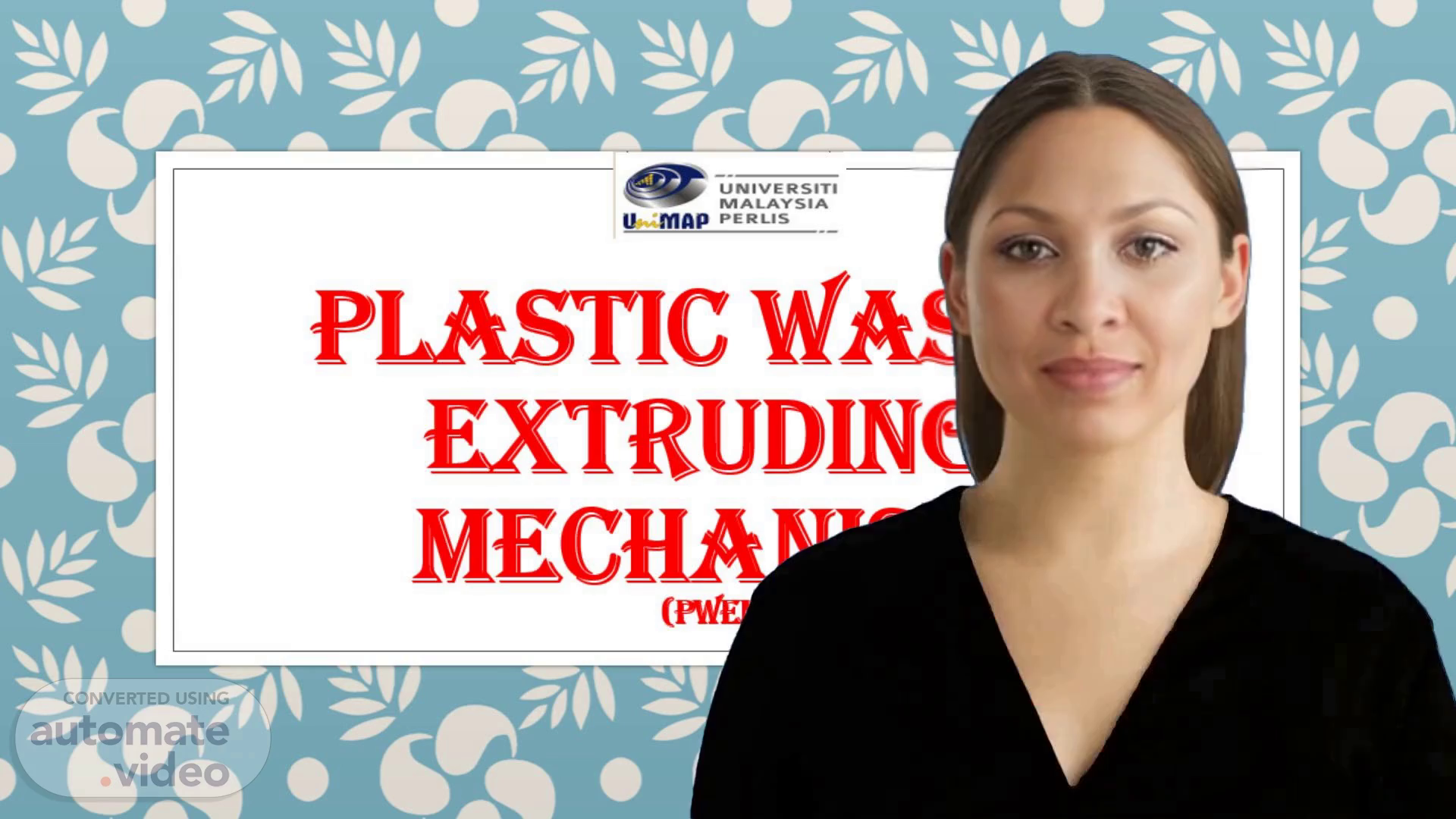
plastic waste extruding mechanism
Scene 1 (0s)
[Virtual Presenter] Salam, The title for this project is plastic waste extruding mechanism (PWEM) Our Team are: FAHISAL BIN ABDULLAH ABDULLAH FAHIM BIN MOHAMMAD ZAKI SITI NORSAFURA BT ABDULLAH NORHAIRI From: Faculty of Electrical Engineering & Technology Universiti Malaysia Perlis.
Scene 2 (27s)
[Audio] INTRODUCTION This research aims to solve the problem of plastic waste by creating a machine that turns old plastic bottles into material for 3D printing. Using SolidWorks software, the goal is to overcome past problems and costs related to this type of machine. Challenges include making sure the material comes out the right size, without bubbles, and without burning. The focus is on making improvements to a polyethylene terephthalate (PET) bottle recycling machine, like adding a motor and a fan, to make it work better and help the environment by recycling more plastic for 3D printing..
Scene 3 (1m 6s)
[Audio] PROBLEM STATEMENT The problem with recycling plastic for 3D printing lies in outdated and expensive extruder machines, which struggle to maintain quality and efficiency. A better extruder is needed to handle plastic waste effectively without requiring it to be repurposed into new products. Existing machines face challenges like complexity and high costs, hindering their ability to process materials like PET plastic bottles consistently and sustainably.
Scene 4 (1m 38s)
[Audio] The process of PWEM HARDWARE is depicted in Figure 1..
Scene 5 (2m 4s)
[Audio] The project begins by placing a plastic bottle onto the metal rod. Next, the bottle is cut into initial strips to connect it to Motor1. Motor1 then pulls the bottle strips and feeds them to the MK8 hot end kit. Simultaneously, the hot end kit heats the strips, transforming them into filament. Finally, the output filament is attached to the spool, and Motor2 is activated to roll it into a filament roll. This process is depicted in Figure 1..
Scene 6 (2m 50s)
[Audio] For The Result: The findings indicate that the stripper effectively removes the outer layers of plastic bottles. It works by stripping off labels, caps, and other non-PET parts, leaving behind only the PET plastic suitable for filament making. Different sizes of bottle strips are illustrated in Figure 2. The filament results in Figure 3 reveal a length of 6.3 meters and a total completion time of about 41 minutes and 7 seconds..
Scene 7 (3m 20s)
[Audio] NOVELTY & INVENTIVENESS The project stands out because it's inventing a machine that recycles old plastic into material for making things, which is good for the environment. It's making the machine better by adding new features like a redesigned bottle stripper and controlling the pressure carefully. Additionally, smart technology is being used to control the temperature, ensuring everything works well and helps save energy. ADVANTAGES The project optimizes a plastic waste extruder system, integrating sustainable design advantages for enhanced manufacturing efficiency and environmental conservation. SUSTAINABILITY DEVELOPMENT GOAL The use of PET filament in 3D printing supports SDG 9 by showcasing sustainable industrial practices through innovative resource utilization and resilient infrastructure development. Thank you for your attentions..